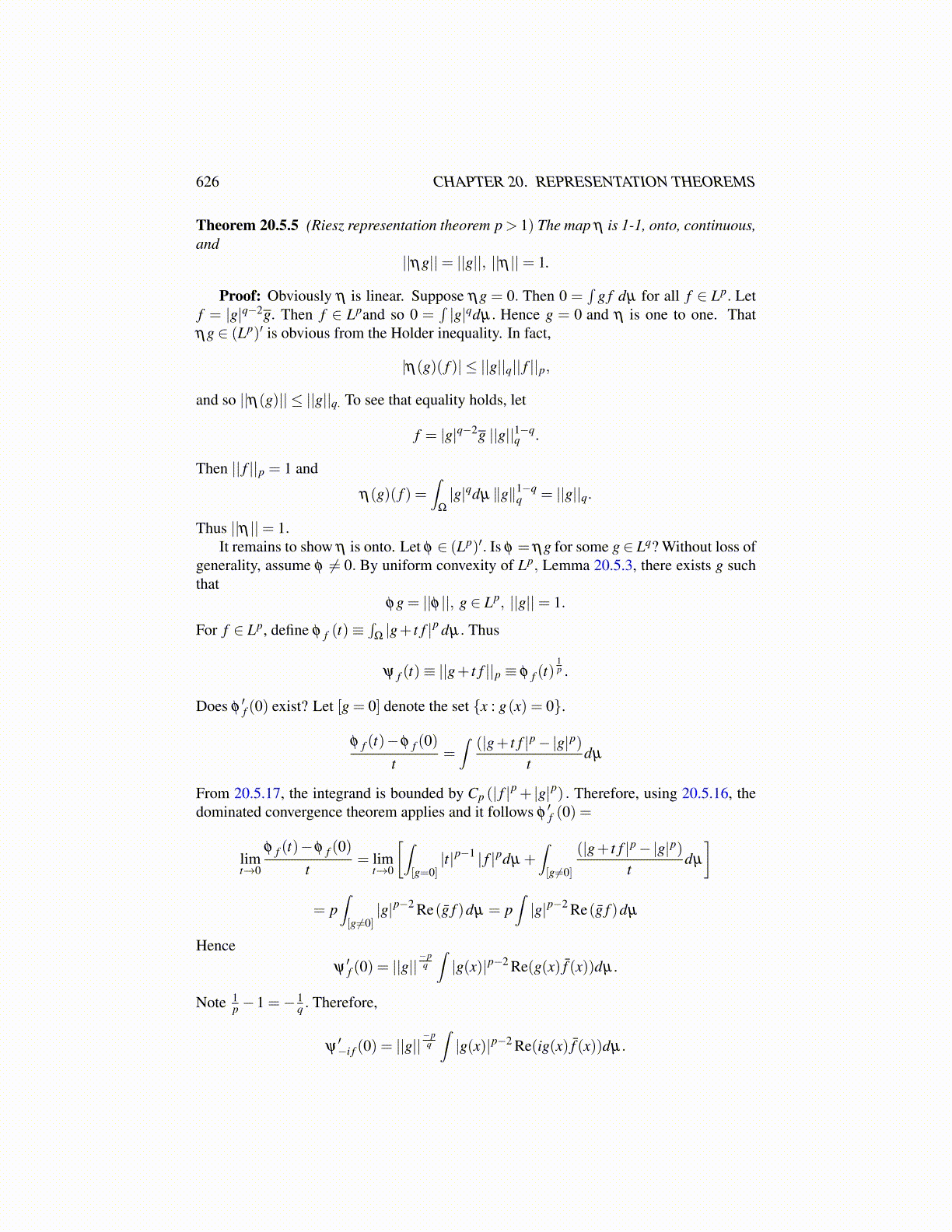
626 CHAPTER 20. REPRESENTATION THEOREMS
Theorem 20.5.5 (Riesz representation theorem p > 1) The map η is 1-1, onto, continuous,and
||ηg||= ||g||, ||η ||= 1.
Proof: Obviously η is linear. Suppose ηg = 0. Then 0 =∫
g f dµ for all f ∈ Lp. Letf = |g|q−2g. Then f ∈ Lpand so 0 =
∫|g|qdµ. Hence g = 0 and η is one to one. That
ηg ∈ (Lp)′ is obvious from the Holder inequality. In fact,
|η(g)( f )| ≤ ||g||q|| f ||p,
and so ||η(g)|| ≤ ||g||q. To see that equality holds, let
f = |g|q−2g ||g||1−qq .
Then || f ||p = 1 and
η(g)( f ) =∫
Ω
|g|qdµ ∥g∥1−qq = ||g||q.
Thus ||η ||= 1.It remains to show η is onto. Let φ ∈ (Lp)′. Is φ = ηg for some g ∈ Lq? Without loss of
generality, assume φ ̸= 0. By uniform convexity of Lp, Lemma 20.5.3, there exists g suchthat
φg = ||φ ||, g ∈ Lp, ||g||= 1.
For f ∈ Lp, define φ f (t)≡∫
Ω|g+ t f |p dµ. Thus
ψ f (t)≡ ||g+ t f ||p ≡ φ f (t)1p .
Does φ′f (0) exist? Let [g = 0] denote the set {x : g(x) = 0}.
φ f (t)−φ f (0)t
=∫
(|g+ t f |p−|g|p)t
dµ
From 20.5.17, the integrand is bounded by Cp (| f |p + |g|p) . Therefore, using 20.5.16, thedominated convergence theorem applies and it follows φ
′f (0) =
limt→0
φ f (t)−φ f (0)t
= limt→0
[∫[g=0]|t|p−1 | f |pdµ +
∫[g̸=0]
(|g+ t f |p−|g|p)t
dµ
]
= p∫[g̸=0]|g|p−2 Re(ḡ f )dµ = p
∫|g|p−2 Re(ḡ f )dµ
Henceψ′f (0) = ||g||
−pq
∫|g(x)|p−2 Re(g(x) f̄ (x))dµ .
Note 1p −1 =− 1
q . Therefore,
ψ′−i f (0) = ||g||
−pq
∫|g(x)|p−2 Re(ig(x) f̄ (x))dµ.